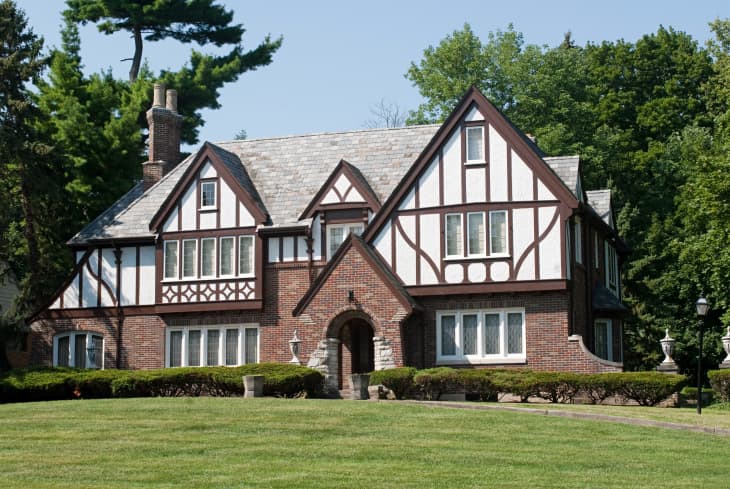What Is a Tudor-Style Home, Anyway?

There are many popular house styles, but let’s shift focus to Tudor houses. You know them when you see them—those medieval-inspired structures that look kind of storybookish. (I’ll admit, my mind goes to the charming little woodland cottages in Disney’s Snow White and the Seven Dwarfs and Sleeping Beauty when I drive past Tudor homes.) But pinpointing the characteristics that make today’s real-world Tudors what they are is surprisingly tricky.
What is a Tudor Home?
The versions of Tudor homes we stumble upon in real estate listings are usually Tudor Revival, a 20th-century style that references Tudor architecture, which Francis D.K. Ching defines in “A Visual Dictionary of Architecture” as “a transitional style of English architecture that developed during the reign of the royal house of Tudor in the second half of the 16th century.” Those Disney cottages, extremely romanticized as they are, have something to them after all—both of the movies I mentioned are based on fairytales believed to take place in the 15th and 16th centuries.
Ching also writes that Tudor architecture is “characterized by the Tudor arch and the application of Renaissance details to buildings otherwise late Perpendicular in style.” Mentioning the Tudor arch, which is a wide arch with a slightly pointed apex, is helpful, but other than that, the fact that this definition is mostly about setting—in England after the Perpendicular style (the last version of English Gothic) and just before the Renaissance—reinforces the fact that Tudor architecture is a transitional style. This means it mixes some elements from the style before it with some from the one coming up, so it has a variety of characteristics and a wide range of examples. The stately brick Hampton Court Palace in London, for instance, is much different than Anne Hathaway’s farmhouse in Stratford Upon Avon, with its thatched roof and exposed timber frame, but both are Tudors.
How to spot a Tudor home quickly
Tudor Revivals, meanwhile, started becoming popular in America in the 1910s and 20s. An exposed timber frame, or half-timbering, is the most defining feature—it’s what shouts “Tudor” from afar. In the 16th century, this frame supported the house and some sort of masonry or plaster, usually clay or mud, was filled in between. Twentieth-century Tudor Revival houses are more structurally sound, so their half-timbering is just for show. If the house doesn’t have half-timbering, however, it doesn’t mean it’s not a Tudor Revival; brick, stucco, or stone are also popular exterior materials.
In addition to this, most Tudor Revival houses credit their whimsical appearance to a steeply pitched roof, an asymmetrical facade, and one or more tall chimneys. The sky’s the limit on castle-like details, such as tall windows with diamond-shaped panes. The only thing that’s rare to see are thatched roofs, which though touted for their efficiency, are less popular than slate or shingle roofs.
But what is it about Tudors that made people want to revive them? I think it comes down to how these architectural details invigorate the imagination, as well as the noble characteristics they exude. Living in a Tudor Revival feels a little bit like going back in time. In fact, variants of Tudor Revival include the English Cottage and Storybook-style homes, which, in America, were built thanks in part to inspiration from shining examples in films.
Like all fantasies, the popularity of Tudor Revivals came to an end. After World War II, more affordable and mass-produced houses took over. But if you find a Tudor Revival, wherever it is and whenever it was built, it’s sure to be a unique structure that takes a unique owner to buy, move into, and love.